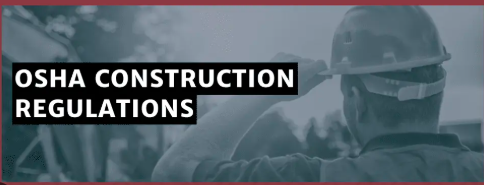OSHA Crane Regulations: A Practical Guide to Compliance on Construction Sites

The osha crane regulations are essential guidelines designed to ensure safety and prevent accidents on construction sites. For crane operators, supervisors, and construction managers, understanding these regulations is crucial to maintain compliance and protect workers. In this article, we provide a practical guide to navigating OSHA’s crane rules, highlighting key requirements and best practices for safe and efficient crane operations.
Overview of OSHA Crane Regulations
OSHA crane regulations set the rules for safe crane operation in the U.S., covering both construction and general industry. They are supported by voluntary ASME standards for technical guidance on rigging, lifts, and signaling.
Applicable OSHA Standards
- Construction Cranes: 29 CFR 1926 Subpart CC – Regulates power-operated equipment that lifts, lowers, or moves suspended loads on construction sites.
- General Industry Cranes: 29 CFR 1910.179 – This regulation applies to gantry cranes in factories and workshops. It covers safety requirements like clearances, walkways, and maintenance responsibilities.
- ASME B30 Standards: These standards give guidance on safe use of slings, hooks, hand signals, and rigging. They are not legally required, but they are widely accepted as good engineering practice.
Core Safety Requirements
- Operator Certification: Crane operators must be certified or licensed and trained on the specific crane they will operate.
- Assembly/Disassembly: Must be supervised by a competent, qualified director.
- Signal Persons: Must have documented qualifications for each signaling method.
- Lift Plans: Must include load weight, radius, and configuration.
- Power Line Clearance: No crane or load may approach within 20 ft of live power lines unless mitigated.
- Inspections: Daily, monthly, and annual inspections are required, with records maintained on-site.
OSHA rules, along with ASME guidance, give clear instructions for safe crane operation. They help employers prevent accidents, ensure operators are properly trained, keep equipment in good condition, and follow the law.
Key Requirements of OSHA Crane Regulations
- Operator Qualification and Certification
Crane operators must be properly trained, certified, or licensed for the specific crane they will operate. Employers are responsible for verifying their competency on the actual equipment and providing ongoing refresher training to ensure skills remain current and operators stay up-to-date with safety regulations. Proper qualification and certification help prevent accidents and ensure compliance with OSHA standards.
- Equipment Inspection and Maintenance
Regular inspection and maintenance are key to safe crane operations. Conduct daily or pre-operation inspections to check controls, safety devices, ropes, hooks, and ground conditions. Perform thorough annual inspections and follow preventive maintenance schedules to avoid equipment failures. Keep detailed records of all inspections, repairs, and maintenance on-site to ensure compliance.
- Load Handling and Rigging
Safe load handling is essential for preventing crane accidents. Always follow the manufacturer’s load charts and guidelines to operate within the crane’s rated capacity. Ensure loads are properly rigged and securely attached using the correct slings and hardware. Never overload the crane or lift in unsafe conditions. Following these rules keeps workers safe, prevents accidents, and ensures compliance with safety standards.
- Safe Operation Practices
Safe crane operation requires clear procedures and constant awareness. Always use trained signal persons and follow established communication protocols to guide crane movements. Be mindful of boom positioning, swing radius, and surrounding hazard zones to avoid accidents. Additionally, have emergency procedures in place to respond quickly to adverse conditions or unexpected events, ensuring the safety of both personnel and equipment.
- Environmental and Site Safety
Ensuring environmental and site safety is critical for safe crane operations. Monitor wind speed, weather, and overall site conditions before and during lifts. Check ground stability and properly set outriggers to maintain crane balance. Always operate safely near power lines and other obstacles, keeping appropriate clearances to prevent accidents and protect personnel.
Compliance and Documentation
Compliance with OSHA crane regulations is essential to ensure safety and avoid penalties. Proper documentation supports safe operations and provides proof of adherence to regulatory requirements.
OSHA Compliance
- Follow all relevant OSHA standards, including 29 CFR 1926 Subpart CC for construction cranes.
- Ensure all crane operators are trained, certified, and competent.
- Always follow the crane manufacturer’s load charts, inspection schedules, and safety rules to ensure safe operation.
Required Documentation
- Operator Certifications: Maintain records of training and qualification.
- Equipment Inspections: Document daily/pre-operation inspections and annual preventive maintenance.
- Maintenance Logs: Keep detailed records of repairs, replacements, and service.
- Operational Decisions: Record any adjustments or precautions taken due to environmental conditions.
Benefits of Proper Documentation
- Demonstrates compliance during OSHA inspections.
- Helps track safety performance and identify dangers.
- Supports accountability among operators and supervisors.
Maintaining compliance and thorough documentation ensures safe crane operations, protects workers, and keeps a clear record for safety management or regulatory audits.
Best Practices for Construction Sites
Following best practices on construction sites ensures crane operations are safe, efficient, and compliant with OSHA regulations.
- Develop a Comprehensive Crane Safety Program
Create a safety program tailored to your site that covers all crane operations. Include clear procedures for inspections, maintenance, and emergency response to ensure safe and organized crane work.
- Ongoing Training and Drills
Crane operators, signal persons, and crew should receive regular training on OSHA regulations or site-specific dangers. Conduct refresher courses and practical emergency drills to reinforce safety procedures, keep skills sharp, and ensure the team can respond quickly in any situation.
- Continuous Danger Assessment
Regularly check the work site for potential dangers, such as unstable ground, obstacles, or nearby power lines. Keep an eye on environmental conditions like wind, weather, and visibility to ensure safe crane operations.
- Use of Technology for Enhanced Safety
Use tools like wind meters (anemometers), sensors, cameras, and telematics to keep track of crane performance or site conditions. Technology can also alert operators to potential hazards or unsafe situations, helping prevent accidents and keep operations safe.
- Clear Communication and Coordination
Effective crane operation depends on good communication between the operator, riggers, and ground crew. Using standard hand signals, radios, or other devices ensures everyone understands instructions. Clear and consistent communication helps coordinate movements, prevent accidents, and keep the worksite safe.
- Documentation and Recordkeeping
Keep clear records of crane inspections, maintenance, operator training, and decisions made during operations. These records help ensure safety rules are followed, spot patterns or issues over time, and support safety checks or audits.
By applying these best practices, construction sites can make crane operations safer, run more smoothly, and stay compliant with OSHA rules. This reduces the chance of accidents and helps protect everyone on the job site.




